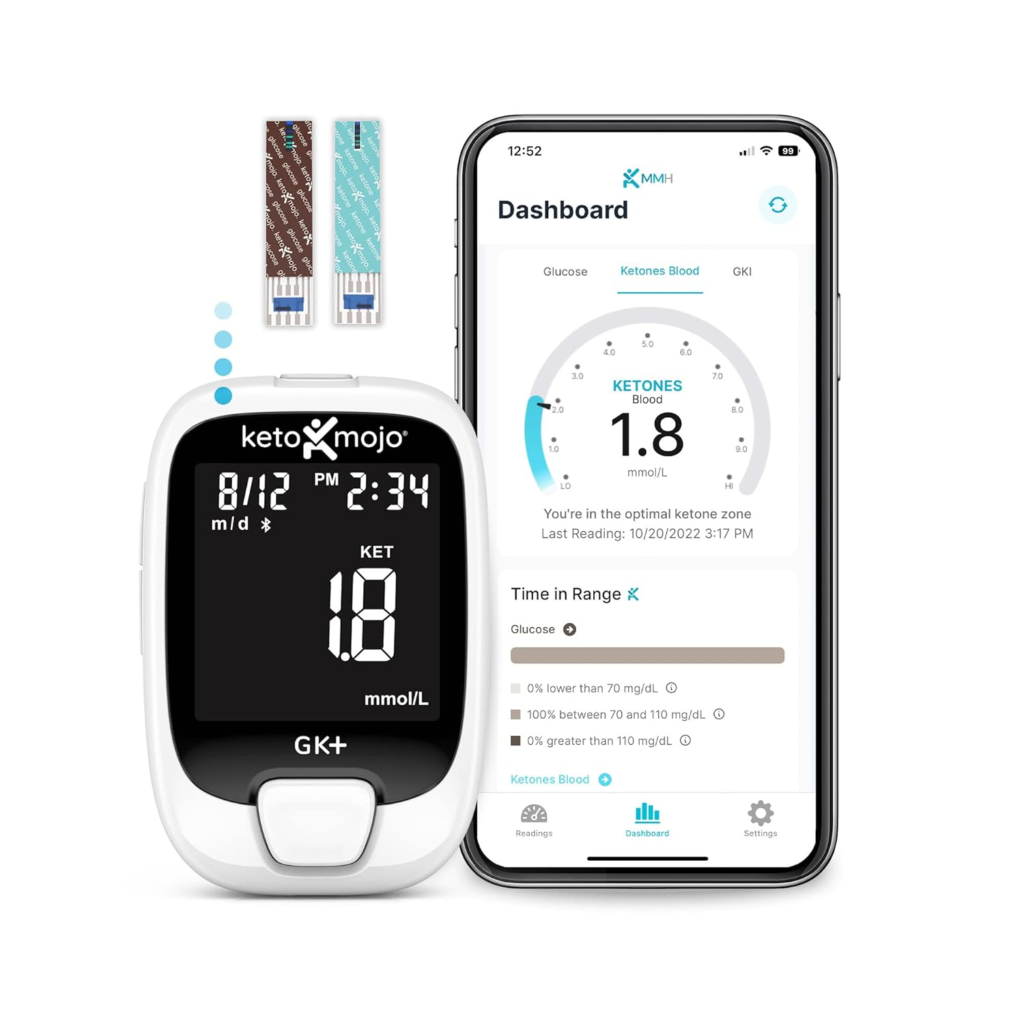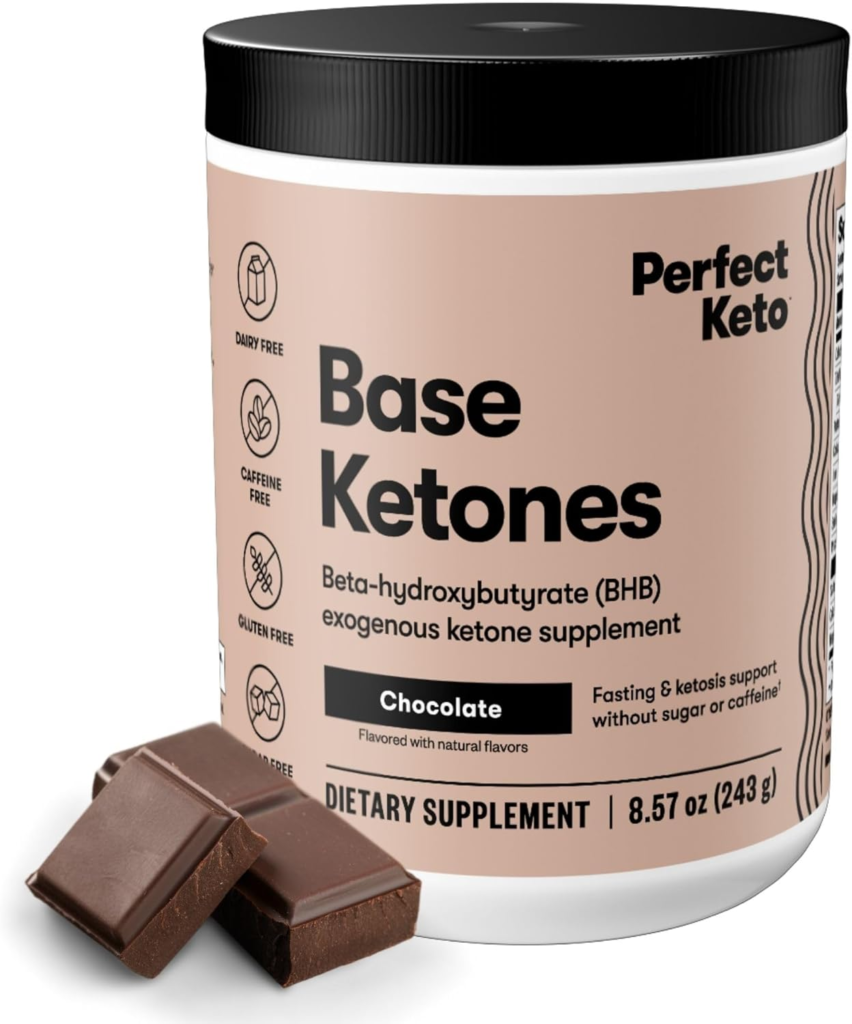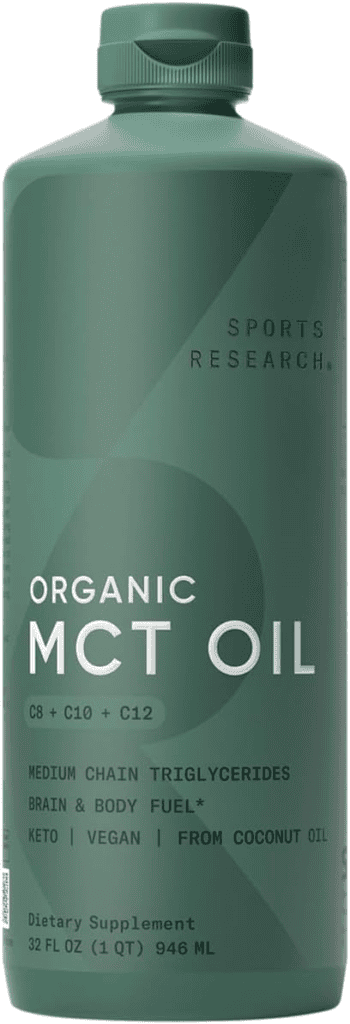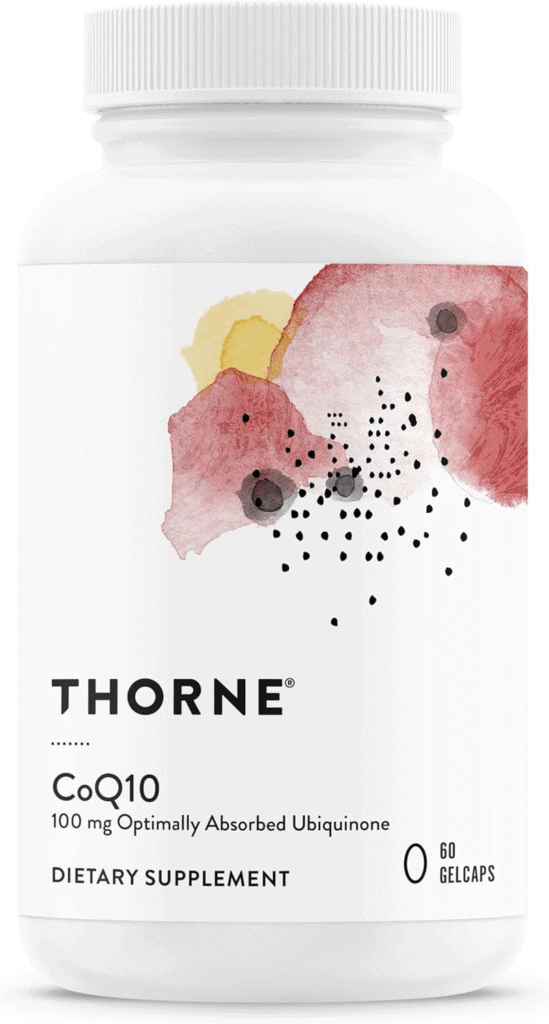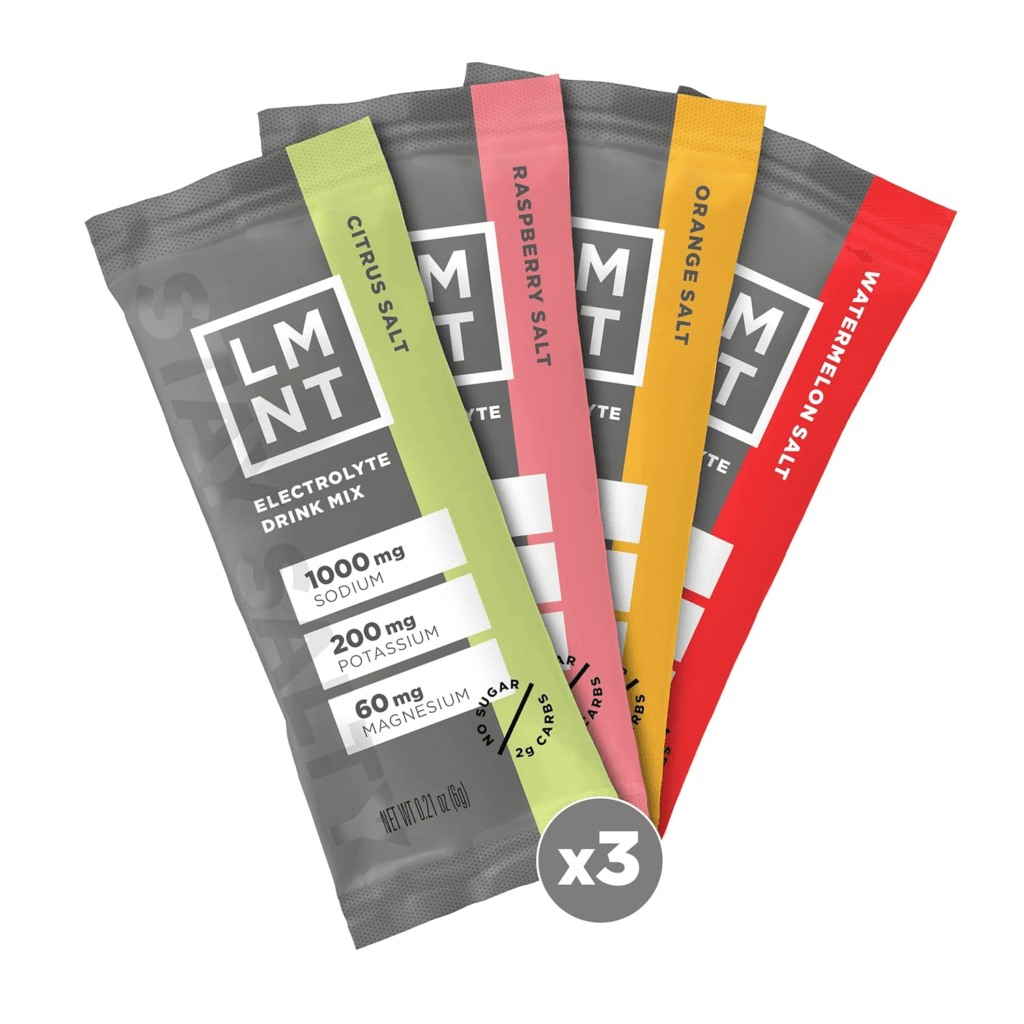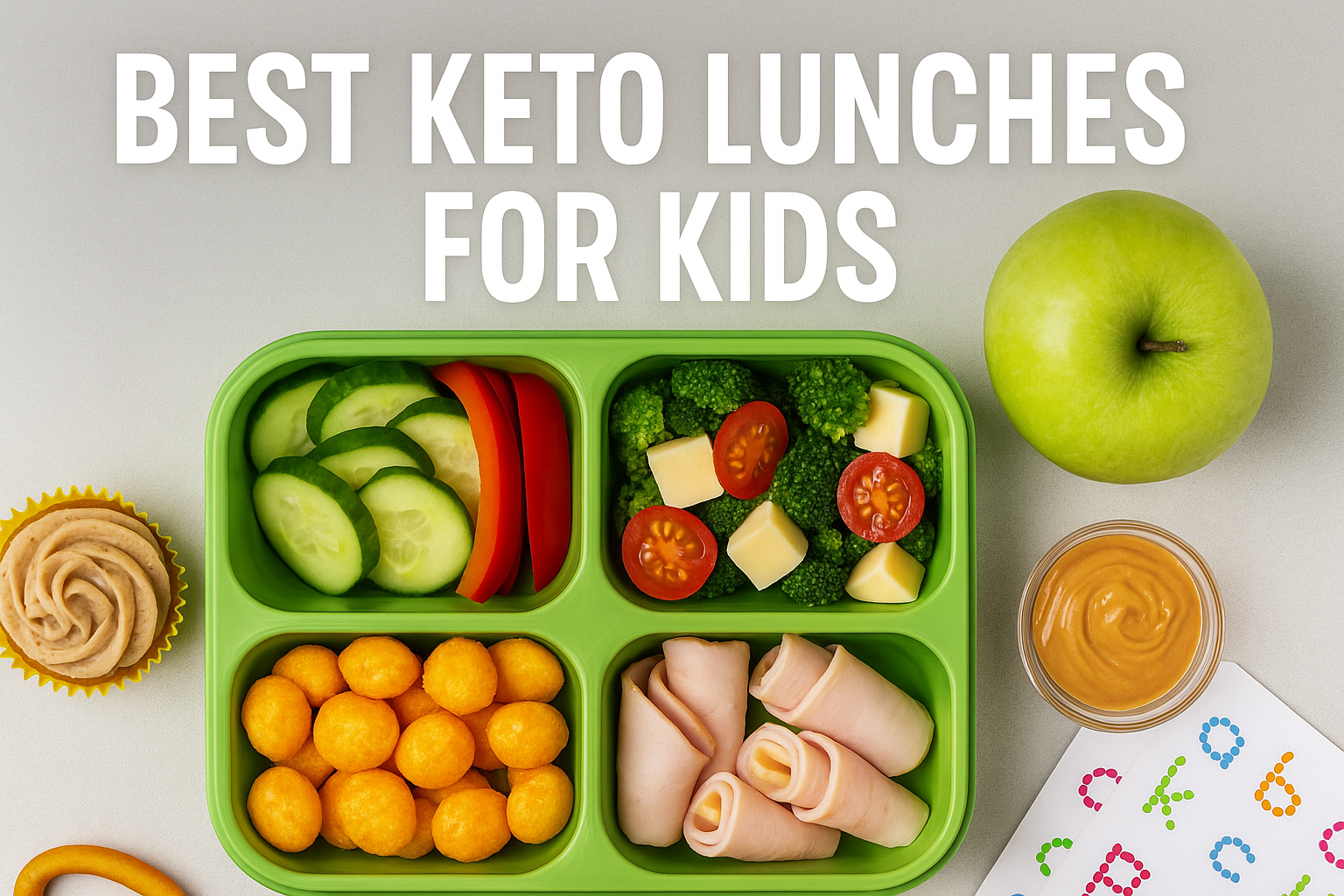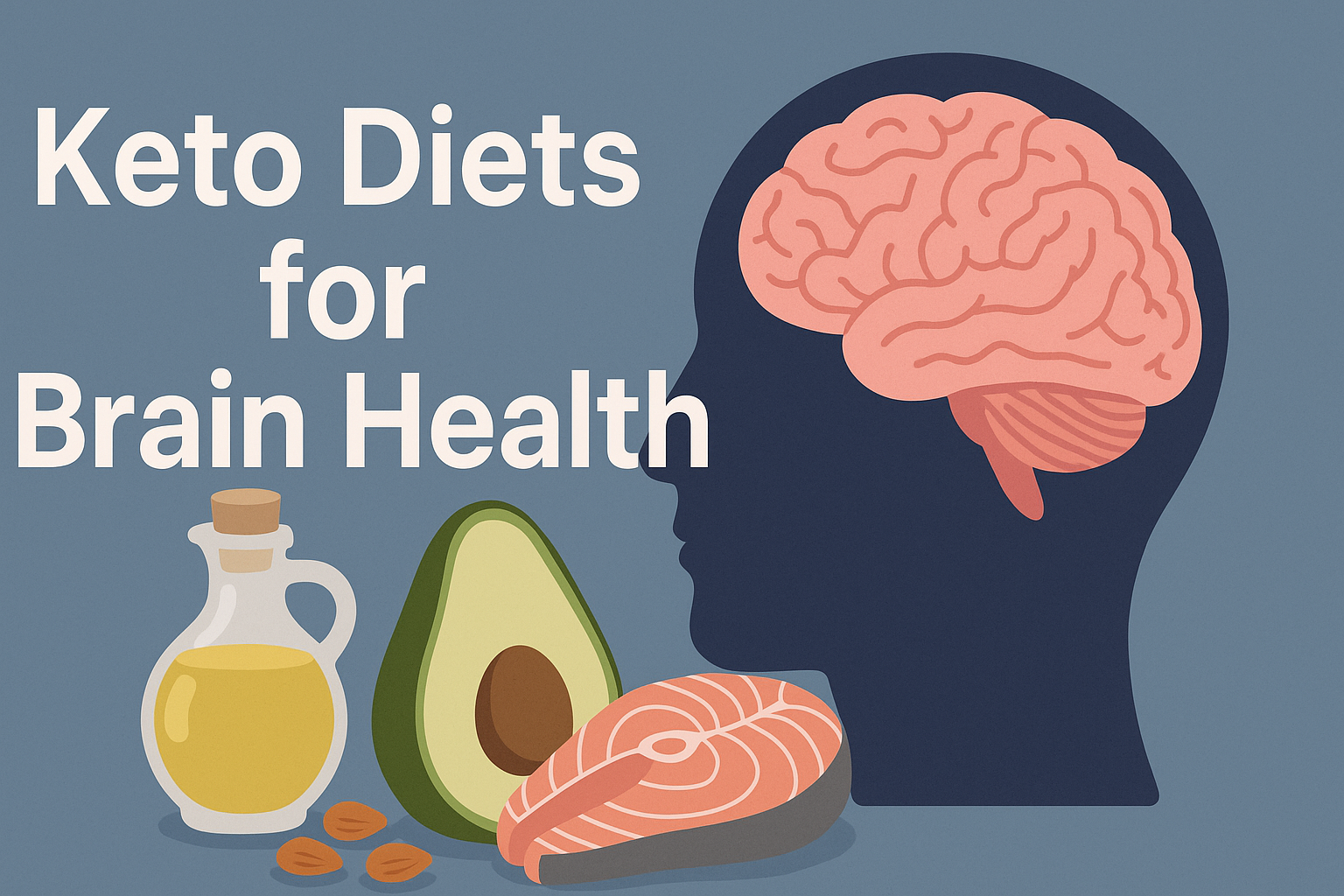Ketosis vs Fat Adaptation: Understanding the Metabolic Shift
Having been deeply involved in the keto universe for years, I can personally attest to the distinctions between ketosis and fat adaption. Though they denote different metabolic states with particular traits and advantages, these words are sometimes used interchangeably.
Struggling to stay in ketosis? Try Perfect Keto Exogenous Ketones – a top-rated supplement to boost energy and support ketone levels!*
Whether you are a keto novice or a seasoned low-carb veteran, knowing the subtleties between ketosis and fat adaption could be transformative for your health path. Let us investigate the interesting universe of these metabolic states, untangling the science underlying them and provide useful knowledge on how to use their power for best health and performance.
* Affiliate disclaimer: This article contains affiliate links. If you purchase through these links, I may earn a small commission at no extra cost to you. This helps support my research and content creation. I only recommend products I genuinely trust and believe in.
The Metabolic Shift: Understanding Ketosis and Fat Adaptation
Both ketosis and fat adaption are metabolic conditions resulting from our bodies moving away from mostly utilizing glucose for energy. They do, however, reflect various phases of this metabolic path.
Ketosis: The Fast Switch
A metabolic condition known as ketosis is defined by high blood ketone body levels. Usually under 50g per day, carbohydrate consumption is significantly limited or prolonged fasting causes it.
The liver begins generating ketones from fatty acids in this condition to offer an alternative fuel source for the body and brain. Often within a few days after beginning a ketogenic diet or fasting, the shift into ketosis can occur rather quickly.
You may have heard of individuals checking their blood or urine for ketones; this is due to ketosis having a quantifiable biomarker. Generally speaking, blood ketone levels over 0.5 mmol/L indicate nutritional ketosis.
Want to test your ketone levels accurately? Check out the Keto-Mojo Blood Ketone & Glucose Testing Kit – the gold standard for tracking ketosis at home!
Read my KETO-MOJO GK meter review
Fat Adaptation: The Long Game
A more slow process that spans weeks to months of regularly following a low-carb, high-fat diet, fat adaptation is. It is a sequence of metabolic and hormonal changes improving the efficiency with which the body uses fat for fuel.
Unlike ketosis, fat adaptation lacks a defined biomarker. Rather, it is defined by increased metabolic flexibility—the capacity to alternate between using fat and carbohydrates for energy depending on availability and necessity.
Need help staying on track? Try Perfect Keto Exogenous Ketones to support energy and focus during adaptation!
>>> Check the latest price of Perfect Keto Exogenous Ketones on Amazon <<<
The Science Underlying the Change
A careful examination of the underlying biology will help us to really value the distinctions between ketosis and fat adaption.
Ketosis: A Metabolic Emergency Reaction
Our bodies first react as though we are starving when we significantly cut carbohydrate consumption. Insulin production falls as glucose levels fall.
This sets off the release of kept fat from our adipose tissue.
These fatty acids are then converted by the liver into ketone bodies—mostly beta-hydroxybutyrate (BHB), acetoacetate, and acetone. Particularly for the brain, which cannot directly utilise fatty acids for energy, these ketones are an alternative fuel source.
Boost ketone levels naturally with Sports Research Organic MCT Oil – a pure, fast-digesting energy source for keto dieters!
>>> Check the price of Sports Research Organic MCT Oil on Amazon <<<
Essentially, this is our body’s metabolic emergency response, guaranteeing we have fuel even when glucose is limited. A survival mechanism that has worked effectively for us across human evolution, it lets us endure times of food shortage.
Fat Adaptation: Reprogramming the Metabolic Machine
Fat adaptation is a more fundamental and enduring alteration of our metabolic mechanism. Consistent carbohydrate restriction over time results in:
- Higher mitochondrial density: The structures where fat is consumed for energy, our cells create more mitochondria. The enzymes in charge of fat breakdown and use grow more efficient and plentiful.
- Increased insulin sensitivity: Our cells get higher insulin sensitivity, which helps to regulate blood sugar.
- Increased fat-burning gene expression: Our bodies begin to express more genes linked to fat metabolism.
Support mitochondrial health with Thorne Research CoQ10 – a powerful antioxidant for energy production!
>>> Check the latest price of Thorne Research CoQ10 on Amazon <<<
These modifications create a metabolic state in which fat burning is the default rather than only an emergency backup strategy.
Daily Life’s Fat Adaptation Versus Ketosis: Practical Consequences
Knowing the distinction between ketosis and fat adaption affects how we feel, function, and advance in our health path in the real world.
A Ketosis Rite of Passage: The Keto Flu
Many individuals initially entering ketosis go through what is called “keto flu.” Fatigue, headaches, irritability, and brain fog are among some symptoms this could entail.
Essentially, it is our body’s learning curve using ketones for energy.
The lack of these symptoms defines fat adaption. Once you are really fat-adapted, you can effortlessly enter and exit ketosis without suffering the keto flu every time.
Athletic Performance: The Adaptation Benefit
Athletic performance makes the difference between ketosis and fat adaption even more clear. Many athletes say that as they initially enter ketosis, their performance declines.
Their bodies are not yet efficient at utilizing fat and ketones for energy, hence this is the case.
Many athletes, once fat-adapted, find better endurance and consistent energy levels. Dr. Jeff Volek and his colleagues’ FASTER study indicated that top ultra-endurance athletes who were fat-adapted could burn fat at twice the rate of their high-carb counterparts.
Fuel your workouts with LMNT Electrolyte Packets – zero-sugar hydration for keto athletes!
Cognitive Function: Fat Adaptation vs. Ketones
Many times, ketosis is linked to better mental clarity and concentration. This is largely due to the brain’s efficient usage of ketones as fuel.
These impacts, therefore, can vary, particularly in the early phases of ketosis.
Over time, fat adaptation usually offers more consistent cognitive advantages. Many people say ongoing increases in focus, memory, and general cognitive performance as the brain gets more efficient at using both ketones and fat for fuel.
Sharpen your mind with Bulletproof Brain Octane Oil – pure C8 MCT oil for mental performance!
>>> Check the latest price of Bulletproof Brain Octane Oil on Amazon <<<
Navigating the Transition: Tips for Achieving Ketosis and Fat Adaptation
Having grasped the distinctions between ketosis and fat adaption, let us investigate how to properly get into these conditions.
Getting into Ketosis: The Fast Track
- Drastically cut your carb consumption to under 50g per day, stressing low-carb veggies and cutting out grains, sweets, and starchy meals.
- Include avocados, olive oil, almonds, and fatty fish among your sources to help drive ketone generation by increasing healthy fat consumption.
- Too much protein can be converted to glucose, hence possibly throwing you out of ketosis.
- Keeping hydrated and controlling electrolytes will assist to reduce keto flu symptoms.
- Think about occasional fasting; it might hasten the shift into ketosis.
Struggling with keto flu? Grab Ultima Replenisher Electrolyte Powder to replenish minerals!
>>> Check the price of Ultima Replenisher Electrolyte Powder on Amazon <<<
Read my Ultima Replenisher Electrolyte Hydration Powder Review
The Long-Term Goal: Achieving Fat Adaptation
- Consistently follow a low-carb, high-fat diet: Allow your body time to adjust by sticking to your keto regimen for at least 4-6 weeks.
- Increase physical activity gradually: This may enhance fat-burning ability and mitochondrial function.
- Give sleep and stress management first priority since they can greatly affect your body’s capacity to adjust to fat burning.
- Try carb cycling: Once fat-adapted, some people discover they can include sporadic higher-carb meals without compromising the advantages of fat adaptation.
- Exercise patience: fat adaption takes time.
- Do not get disheartened if outcomes are not seen right away.
Need meal ideas? Try The Keto Diet Cookbook 2025 by Jane Clayton for delicious low-carb recipes!
>>> Check the latest price of The Keto Diet Cookbook on Amazon <<<
Tip! Read my article about How to Choose the Best Keto Cookbook for Your Lifestyle
Frequent Problems and Their Solutions
Pursuing ketosis and fat adaption has possible traps, challenges, concerns, and problems to be aware of as with any major dietary change.
Pursuing Ketones at the Cost of Nutrition
Focusing too much on reaching high ketone levels is one frequent error. Although ketosis can be beneficial, its not the ultimate goal in itself.
Higher ketone readings are not worth sacrificing general nutrition for.
Instead than only aiming for particular macronutrient ratios, emphasize complete, nutrient-dense diets.
Ignoring Electrolytes
Keto’s shift can cause more electrolyte and water loss. Neglecting to replace them could cause muscle cramps, weariness, and headaches.
Include salt in your diet and think about using magnesium and potassium as supplements.
Hurrying the Procedure
Many people become disheartened if they do not feel fantastic right away upon entering ketosis. Real fat adaption is a process.
Your body will adapt to this new fueling approach; be patient with it.
Disregarding Personal Variation
People react differently to fat adaption and ketosis. While some may prefer a more modest low-carb strategy, others flourish on a rigorous ketogenic diet.
Your body should guide you; be ready to change your strategy as required.
Keto and Fat Adaptation in Real Life: Adapting to Various Situations
Metabolic flexibility is one of the joys of becoming fat-adapted. Here are several methods to change your strategy for various life situations:
Endurance Sports
Being fat-adapted can be quite beneficial for long-distance competitions. You will be able to rely more on your body’s fat stores for energy, maybe lowering the requirement for continual refilling during events.
High-Intensity Athletics
Although fat adaption is excellent for endurance, high-intensity sports could still gain from some calculated carb consumption. Once you are fat-adapted, you can play around with focused carbohydrate consumption around your exercises without sacrificing the general advantages of fat adaptation.
Social Events and Travel
Being fat-adapted allows you more freedom when confronted with restricted dietary choices. You probably find it simpler to go for longer stretches without eating, and if you can not maintain your normal diet, you will not have the same energy dips.
Breastfeeding and Pregnancy
These phases of life usually call for more carbs. You can probably raise your carb consumption to satisfy these higher demands if you are fat-adapted, therefore preserving all the metabolic advantages you have acquired.
Building on Ketosis and Fat Adaptation: From Basics to Mastery
Knowing the subtleties between ketosis and fat adaption is only the start. Your low-carb path will reveal constantly more to learn and improve.
Refining Your Diet
Once you are fat-adapted, you may begin trying out other low-carb eating options. This might be a more laid-back low-carb strategy, focused keto for athletes, or cyclical keto.
Maximizing Other Lifestyle Elements
Fat adaptation is more than just nutrition. By maximizing your sleep, controlling stress, and including appropriate activity, you can increase its advantages.
Investigating therapeutic uses
For people with particular health concerns, knowledge of ketosis and fat adaption can provide possibilities for possible therapeutic uses, from controlling epilepsy to investigating new studies on neurodegenerative illnesses.
Practical Exercises to Strengthen Your Knowledge
- For the first month of your low-carb path, maintain a thorough food and symptom record.
Record when you first see ketones and when you begin to feel the advantages of fat adaption. - Try various degrees of carb restriction and observe how it influences your physical performance, mental clarity, and energy levels.
- Athletes should attempt the same activity at many points along their path: when they initially enter ketosis, after a few weeks, and once they feel completely fat-adapted. Evaluate your performance and your feelings.
- Practice going without eating for gradually longer times.
- Begin with twelve hours and progressively raise to sixteen or perhaps twenty-four.
- Observe how your hunger and energy levels shift as you grow more fat-adapted.
- Should you have a constant glucose monitor, watch how various diets and activities affect your blood sugar response as you grow more fat-adapted.
Frequently Asked Questions
How do ketosis and fat adaption differ?
Typically within days of acute carbohydrate restriction, ketosis is a metabolic condition marked by high ketone levels in the blood. Conversely, fat adaptation is a longer-term process that improves the body’s capacity to effectively utilize fat for fuel, happening over weeks to months of steady low-carb diet.
How long until one becomes fat-adapted?
Usually, being fat-adapted takes from 2 to 8 weeks of regularly following a low-carb, high-fat diet. But for some people, depending on metabolic health, exercise level, and diet adherence, this can change greatly.
Is it possible to be in ketosis without being fat-adapted?
Certainly, you can be in ketosis even if not completely fat-adapted. While fat adaption is a more protracted process involving more substantial metabolic alterations, ketosis can be attained rather fast.
How can I tell whether I am fat-adapted?
Stable energy levels all day, less hunger, better physical activity endurance, and the capacity to go longer without eating without feeling major energy drops are all signs of fat adaption.
Can one lose the advantages of fat adaptation?
Although regularly eating large amounts of carbohydrates can temporarily diminish some of the advantages of fat adaptation, many individuals discover that even with rare higher-carb meals they can keep a certain metabolic flexibility once they have been fully fat-adapted.
Is a ketogenic diet good for athletes?
Many athletes, especially those in endurance sports, say their performance has increased after becoming fat-adapted. The adaption phase, meantime, may first result in worse performance; some high-intensity sports might still gain from calculated carbohydrate consumption.
Does being fat-adapted require the keto flu?
Although many individuals report the “keto flu” when first switching to a ketogenic diet, it is not required for becoming fat-adapted. Gradual carb reduction and good electrolyte control can help to reduce these effects.
Does fat adaptation promote weight loss?
By enhancing metabolic flexibility, lowering appetite, and maybe boosting the body’s capacity to access and burn stored fat for fuel, fat adaptation can assist fat reduction efforts.
How safe is a ketogenic diet long-term?
For many, a well-designed ketogenic diet can be safe and helpful long-term. Especially if you have pre-existing health issues, it is always crucial to monitor your health indicators and cooperate with a medical practitioner.
Is fat adaption measurable as ketosis is?
Unlike ketosis, which can be tracked by blood, breath, or urine ketone levels, there is no particular biomarker for fat adaption. Usually, subjective criteria such as energy levels, eating patterns, and athletic performance are used to evaluate it.
Key Takeaways:
- Fat adaptation and ketosis are separate metabolic states with particular traits and benefits.
- While fat adaption is a long process that results in more stable benefits, ketosis can be attained rapidly but might have first negative effects.
- Particularly in endurance sports, fat adaptation offers more metabolic flexibility and may increase athletic performance.
- Not only macronutrient ratios but also general nutrition requires patience, consistency, and focus during the shift to ketosis and fat adaption.
- Once fat-adapted, you may adjust your strategy to fit various life situations and health objectives.
Top Amazon Picks for Keto & Fat Adaptation
- Best Ketone Monitor: Keto-Mojo Blood Ketone & Glucose Testing Kit
“Know your numbers—optimize your keto journey!” - Best Exogenous Ketones: Perfect Keto BHB Salts
“Fast-track ketosis and crush cravings!” - Best MCT Oil: Bulletproof MCT Oil
“Instant energy without the crash!” - Best Electrolytes: LMNT Recharge Packets
“Stay hydrated, avoid keto flu!” - Best Keto Cookbook: The Keto Diet Cookbook 2025 by Jane Clayton
“Delicious meals to keep you on track!”

